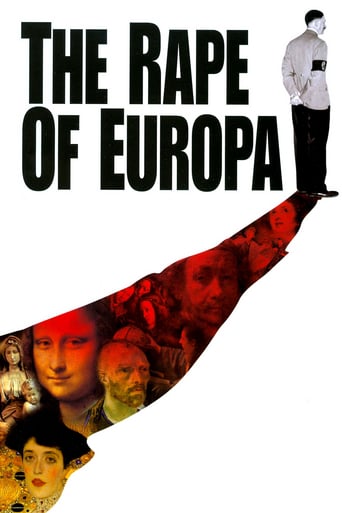

Greetings again from the darkness. Watching the 2014 release of The Monuments Men inspired me to re-watch this fascinating documentary on the same subject. Thanks to the interviews of real life Monuments Men like Harry Ettlinger, Kenneth Lindsay, Charles Parkhurst and Bernard Taper, we better understand the overwhelming mission these folks were on, and how even today, some battles wage on over the rightful owners of artwork.To drive home the point that there is more at stake than just pride, the case of Klimt's "Portrait of Adele Bloch-Bauer I" is studied. Adele's niece continued her litigation against Austria until a court finally awarded her the painting (and 3 others). She sold "Adele" for $135 million to a collector. So clearly the cause is not just for mother country. Economics play a huge role. Regardless, the more interesting portion of the story is the relentless pursuit of stolen artwork, artifacts, furniture and collectibles, and the attempts to return them to the rightful owners. That, combined with the devastating architecture destruction brought on by WWII, really make it a bittersweet story.The breathtaking photographs and archival film footage provide a clear understanding of the breadth of destruction. Seeing the before and after of the Monte Cassino monastery is just crushing. Gaining perspective on the damaged frescoes, some dating to 1360, when Pisa's Camposanto was bombed drives home the significance of culture and history. Seeing the aftermath of the bombing of Florence's iconic bridges brings tears to the eyes. The most impressive piece is that so much of Europe has been rebuilt in the past 7 decades. Maybe that goes to answer the question of whether a human life is worth protecting art. People survive and find a way ... even if Rafael's "Portrait of a Young Man" is still missing.This is based on the book by the Lynn Nicholas, and the film does a terrific job of presenting how the war impacted Russia, Germany, Italy, France, Austria and Poland. It's also tough to reconcile, as one of the Monuments Men attempts, the idea that the Nazis were so careful with the stolen artwork while simultaneously exterminating so many Jewish people. Maybe things would have been different if a young Adolph Hitler had been accepted to art school.
... View MoreThis is a sad but fascinating documentary. While I knew that Nazis stole art throughout Occupied Europe, I didn't realize how systematic it was as well as the HUGE scope of the plundering. It wasn't just Goering (the most famous for his plundering) but Hitler and many of his henchmen that were behind the thefts--and they planned their invasions with plunder in mind! So, for example, when they thought art to be 'decadent' is was often destroyed--and when it was 'good', it was sent for German museums or to the private collections of these thieves! Today, some museums (such as in Vienna) talk at returning paintings to original families! Fortunately, some others (like the Utah museum) did return painting and acted responsibly when they learned that pieces of art in their collections were stolen by the Nazis. Other topics discussed in this interesting film were: The Soviet 'trophy brigades' returned the favor and plundered German museums and private collections--and today they STILL have the art and refuse to return it.That huge caches of art were found in mines as well as the famous Neuschwanstein Castle in Southern Bavaria.The ways that the Allies tried to avoid destroying art when they fought the Germans as well as efforts post-WWII to catalog and restore art to the rightful owners.It was very nice seeing Jewish people get back their silver 'Torah crowns'--and I found it very touching.Thousands of pieces of art are still missing--either destroyed or in private collections.All in all, a fascinating portrait of a seldom talked about but sick side of the Nazis--priceless art stolen from Holocaust victims and museums. Well worth seeing.
... View MoreI think somebody should make a documentary about the British Museum for starters. Let's count the artifacts there, they have looted. When the Prussians started to push the Germans back they took almost everything from the countries they marched trough. War is brutal and mindless. All war waging countries will loot & destroy. Growing up in eastern Europe I have a bit different opinion about WW2.I liked the archive footages, they were great. The narrator did a good job, but I liked it more with some real documentary firmness. Anyways, you should see the movie with an opened mind and make the judgment yourself after it.
... View MoreAs everyone in America retreats to their suburban mansions and the computer screens, it is a great experience to go out to the movies and see a film of real social import. If you love history and art, like I do, you certainly do not want to miss this film. The brutal effects of Nazi destruction never goes away, it keeps on coming, like a nightmare from the 20th century that we are all dreaming about. This film demonstrates the innate power of art. It shows, through a deep examination of the looting of Europe's treasures, what these works really meant to the countries who had them. And it reveals the utterly strange connection between the life of Hitler, failed art student, and the hellish destruction he unleashed on the world. In this season of filmic dreck at the mall, this strong documentary is definitely worth seeking out.
... View More